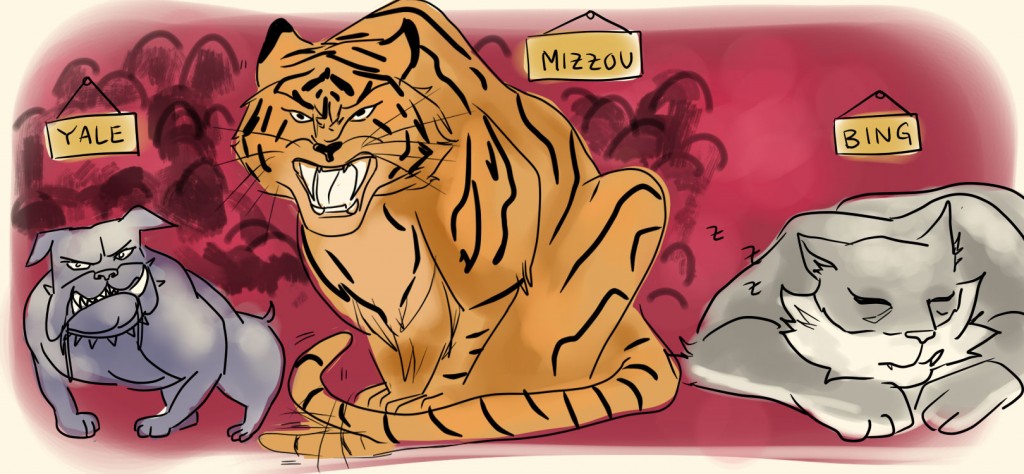On Monday afternoon, University of Missouri system president Tim Wolfe and the chancellor of its Columbia campus, R. Bowen Loftin, announced that they would resign following pressure from protesters who claimed that they had not done enough to address complaints about racial issues.
At Yale University, a university email regarding potentially offensive Halloween costumes led to widespread protests after a professor complained in an email to her students that college campuses are quickly losing their reputation of being havens for free speech and expression. This followed a separate incident on October 30 where it was alleged that a member of the Yale chapter of Sigma Alpha Epsilon said “white girls only” at the door of a party.
Though the specifics may be different, it is impossible to not see the similarities between these protests and the ones that arose on our own campus just last year. Sure, the outcome wasn’t as large as Missouri’s, and it didn’t receive the media attention that Yale is currently getting, but the problems at the core of our protests are just as important.
Though there are fewer obvious examples of social activism on our campus this year, that does not mean that all of last year’s problems have been fixed. Binghamton University still has a long way to go to be as inclusive a campus as it should be. All it takes is a glance at the New York Times to get a glimpse of what can happen at a university when bottled-up frustrations with the status quo are sparked by an overt act of discrimination.
This isn’t to say that there hasn’t been progress made since last year — we’ve seen improvements in the availability of gender-neutral bathrooms as well as a decrease in offensive, aggressive comments on social media. In the same vein, the University has made a concerted effort to increase diversity in its hiring practices. But, if anything, the events at our fellow universities show that our school must not ease up for even a second. As BU continues its relentless march towards “premier,” it must be careful to not lose sight of what makes students feel comfortable at a university in the first place. New facilities and a flashy logo mean nothing if the University’s culture does not change with the times.
Hopefully Yale and Missouri will serve as examples to BU — a reminder to the administration that it got off easy last year. We are in calm waters now, but the only way to prevent a storm from hitting is to work for it. Binghamton University now, more than ever, has to be a campus that can be regarded as an inclusive, safe space for every student.



